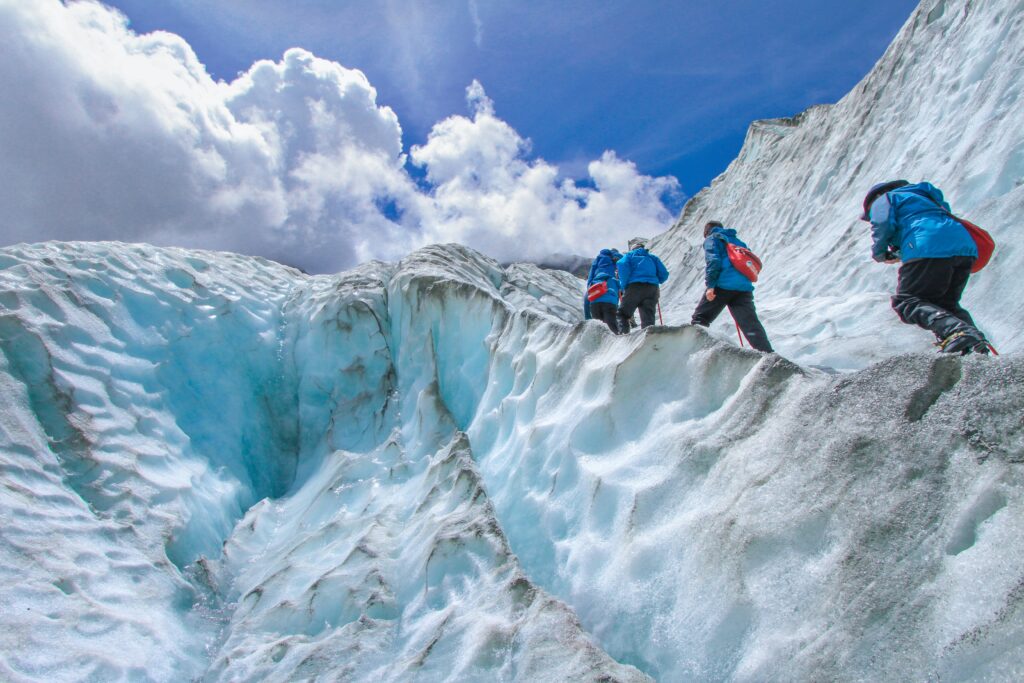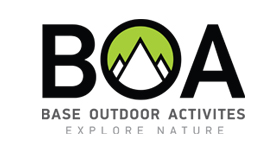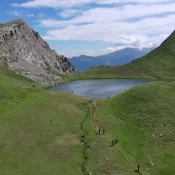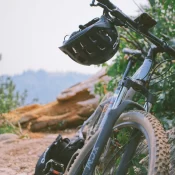
Mountaineering Equipment
He love for the mountains led me to engage in mountaineering, an activity that combines exploring nature with the challenge of personal achievement. Every ascent offers a new experience, from the feeling of freedom and isolation in the wilderness to the satisfaction of conquering a peak. Mountaineering is not just a sport; it’s a way of life that cultivates patience, endurance, and mental focus.
The mountains teach you to respect the power of nature and reward you with unparalleled moments of beauty and tranquility. With each new adventure, you learn something new about yourself and the world around you.
Mountaineering is an exciting activity that blends a love of nature, adventure, and physical challenge. As mountaineers ascend peaks and traverse trails, they come into direct contact with the grandeur of the natural landscape, enjoying the serenity of the mountains and the sense of accomplishment. Mountaineering requires physical strength, endurance, and mental concentration, while also enhancing teamwork and self-confidence.
Whether you are a beginner or an experienced mountaineer, proper preparation and the right equipment are essential for the safety and enjoyment of every climb. From gentle hills to the most demanding peaks, mountaineering offers unique experiences, making every step worth the effort.
However, everything starts with the right and suitable equipment. Mountaineering demands preparation and attention to detail, and the equipment forms the foundation for a safe and enjoyable experience in the mountains. From durable hiking boots and a layering system that adapts to weather conditions to specialized gear for the most challenging conditions, every piece of equipment plays its crucial role.
The right choice of equipment ensures comfort, safety, and confidence, allowing you to enjoy the climb with complete focus on nature, rather than on the challenges that may arise from inadequate preparation. In this way, mountaineering becomes a life experience, offering maximum satisfaction with every step.
- Low-altitude peaks and summer mountaineering: Require more basic equipment and are ideal for beginners or those who want to enjoy the mountains without the difficulties of extreme weather conditions.
- Mid-altitude peaks and winter mountaineering: Require more specialized equipment, such as crampons and ice axes, and demand knowledge of handling more challenging weather conditions, such as snow and ice.
- High-altitude peaks: Demand advanced physical fitness, a high level of technical skills, and equipment suitable for extreme conditions, such as glaciers, low temperatures, and reduced oxygen levels.
In the first level, which involves low-altitude peaks and summer mountaineering, the equipment is more basic and suitable for milder conditions. Here is the list of equipment you will need:
- Hiking boots: Essential for protecting your feet and providing good traction on rocky terrain and trails.
- Layering system:
- Base layer: Moisture-wicking clothing that dries quickly.
- Light insulating layer: Fleece or another thin layer for cool morning hours.
- Waterproof/Windproof layer: Protection against sudden weather changes or wind.
- Backpack: Lightweight and durable, around 20-30 liters, with space for water, snacks, a first aid kit, and essential gear.
- Hat or Buff: Protection from the sun and heat, along with sunglasses for intense sunlight.
- Gloves (lightweight): For protection on rocky or cold areas if the route involves handholds.
- Hiking socks: Thermal or woolen for good sweat absorption and blister prevention.
- Gaiters: To protect your feet from snow and moisture, covering the area between your shoes and pants.
- Headlamp: In case the climb takes longer than expected or if you start early in the morning.
- Water and food: Sufficient amount of water (e.g., 1-2 liters) and energy snacks to maintain your energy throughout the hike.
- First aid kit: Basic first aid supplies for any minor injuries.
- Map and compass or GPS: For navigation and to avoid losing your way on the trail.

This equipment ensures that you’ll be comfortable and safe during a summer hike at a low altitude.
In the second level, which involves mid-altitude peaks and winter mountaineering, you will need additional equipment compared to the first stage due to more challenging weather conditions and the likelihood of encountering snow and ice. This specialized equipment includes:
- Crampons: To move safely on icy or snowy terrain, ensuring good traction.
- Ice axe: An essential tool for support, stability, and safety on steep slopes or ice.
- Snowshoes: Especially useful if you need to cross deep snow, preventing you from sinking with each step.
- Snow shovel: For dealing with difficult snow conditions, creating a shelter, or clearing the trail.
- Insulated gloves: Replace the lightweight gloves from the first stage, providing better protection against cold and moisture.
- Thermal socks: Thicker than summer socks, offering improved insulation and protection from the cold.
- Additional insulation in the layering system:
- Heavier insulating layer (e.g., down or technical fabric) for better cold protection.
- Waterproof pants: In addition to the windproof/waterproof jacket, these pants protect your legs from snow and moisture.
- Thermos: To have warm beverages (e.g., tea or hot water) that are essential for hydration in cold conditions.
- Snow goggles or protective glasses: To shield your eyes from the sun’s reflection on the snow and the wind.
- Thermal sleeping bag (if the route involves an overnight stay): With proper insulation for cold conditions, along with a good sleeping pad.
- Winter survival kit: Items such as an emergency thermal blanket, multi-tool, and lighter, useful in case of emergencies.
- Technical crampons or ice cleats: Specialized crampons for more technical climbing on icy and steep surfaces.
- Mountaineering rope: Suitable for climbing on icy passages and suspended crossings.
- Climbing harness: For safe climbing, especially on exposed and challenging routes, as well as for use on glaciers.
- Carabiners, nuts, and adaptors: Essential for climbing on icy or rocky surfaces, where protective equipment is required.
- Slings and anchors: For securing in dangerous passages and stabilizing in extreme conditions.
- Helmet: Essential for climbing on rocky or icy areas, protecting against falling rocks or ice.
- Satellite phone: For communication in areas with no signal and safe navigation in uncharted or hard-to-reach areas.
- Balaclava and face mask: To protect your face and neck from wind and frost.
This additional equipment will help you tackle the more demanding conditions of mid-altitude peaks and winter mountaineering, ensuring your safety and efficiency on the mountain.
This additional equipment will help you handle the more challenging weather conditions encountered on mid-altitude peaks and during winter mountaineering.
At the third level, which involves high-altitude peaks, the demands increase significantly due to extreme conditions, low temperatures, and reduced oxygen levels. At this stage, the equipment becomes even more specialized and technical. In addition to the equipment from the first two levels, you will need the following:
- Oxygen mask and respirator: At very high altitudes, the oxygen level drops significantly, so an oxygen supply system may be necessary.
- High-altitude boots: Highly insulated and durable for extremely low temperatures, often with double or triple layers to keep your feet warm and dry in extreme cold.
- High-altitude expedition jacket: Extremely high thermal insulation, often with down or specialized materials for protection against extreme cold.
- Additional thermal insulation gear:
- Multi-layer gloves: Specifically designed for extremely low temperatures.
- High-altitude thermal clothing: More specialized for extreme conditions, with maximum heat retention.
- High-altitude socks: Thermal, suitable for extreme cold, with extra protection to prevent frostbite.
- Individual tent or high-altitude shelter: If conditions require overnight stays on glaciers or high peaks, a specialized tent provides maximum protection from cold and wind.
- High-altitude footwear: Appropriate boots with greater insulation and higher coverage to protect your feet in extreme temperatures.
At this third level, safety and preparation are of utmost importance, and this equipment is crucial for success and survival in high-altitude climbs.

It is important to remind that the needs for sleep in the different levels of mountaineering are equally critical. The sleeping pad, sleeping bag, and tent must meet the required specifications to ensure safety and comfort under the respective conditions of each level.
- Sleeping pad: Essential for insulation from the cold and the hard surface of the ground. In low and mid-altitude conditions, a lightweight and compact pad may suffice. However, at higher altitudes, a pad with higher thermal insulation is necessary to protect against the frozen ground.
- Sleeping bag: The sleeping bag must be suitable for the temperature of the area you plan to visit. In low-altitude hikes, a summer sleeping bag may be adequate, while in mid and high-altitude peaks, a sleeping bag that can withstand low temperatures and provide maximum thermal comfort is essential.
- Tent: The tent must be durable enough to withstand the weather conditions you might encounter. At lower peaks, a lightweight three-season tent may be sufficient, but for more demanding routes at mid and high altitudes, you will need a four-season tent that can withstand strong winds, snow, and frost.
The correct choice of these elements ensures not only a comfortable sleep but also your safety in the prevailing weather conditions. Invest in sleeping gear specifically designed for the challenges you may face at each level of mountaineering, so you can enjoy the experience with the maximum possible comfort and protection.
Consult the experts: Before starting a climb, especially on more demanding and risky routes, it is important to seek advice from experienced mountaineers or instructors. Experts can provide you with valuable information about techniques, equipment, and the conditions you will face, helping you avoid common mistakes.
Get trained: Knowledge is the key to safety on the mountain. Attend training seminars and programs, whether for basic skills like using equipment or more specialized techniques, such as securing yourself on snowy terrain or navigating significant altitude differences.
Practice makes perfect: Theoretical knowledge must be accompanied by hands-on practice. Dedicate time to training fields to familiarize yourself with the equipment and techniques. Practicing in safe conditions will better prepare you for the challenges of the mountain, improving your confidence and skills.
Buying Mountaineering Equipment
When purchasing mountaineering gear, it is important to choose reliable stores that offer quality products and specialized services. Some of the best options include:
- Specialized mountaineering equipment stores: These stores offer a wide range of products and have staff who can advise you on the best equipment for your needs. Specialized stores often have high-quality equipment and branded products.
- Sporting goods stores: Larger sporting goods stores may also have mountaineering equipment, but it’s crucial to ensure that the products meet the necessary standards for mountaineering.
- Online stores: There are many specialized online platforms that offer a wide variety of products, often at better prices or with discounts. It is worth checking product reviews before making a purchase and ensuring that the store offers guarantees or return options.
- Local shops near mountain areas: Often, stores near popular mountaineering destinations have good equipment options and are well-informed about the needs of visitors. In addition, their staff may have direct knowledge of the conditions in the surrounding areas and provide helpful advice.
It is always a good idea to compare prices and look for equipment that offers the best value for money. Additionally, choosing branded products ensures their durability and reliability for the demanding conditions of mountaineering.
Avoid buying cheap, uncertified materials: Safety is the top priority in mountaineering, and equipment plays a crucial role. Choosing cheap or uncertified materials can put your life at risk and reduce the effectiveness of your activity on the mountain. Invest in equipment that has undergone rigorous testing and is certified for its quality and durability. Purchasing branded products from reputable manufacturers ensures that you will have the necessary support and durability when you need it most.
To enhance your knowledge, it’s a good idea to also read about hiking equipment. Understanding the gear required for hiking will not only improve your skills but also help you make better decisions when choosing equipment for different terrains and weather conditions. This knowledge can be a valuable addition to your overall experience in the outdoors, ensuring that you are well-prepared for any hiking adventure.
Tags





